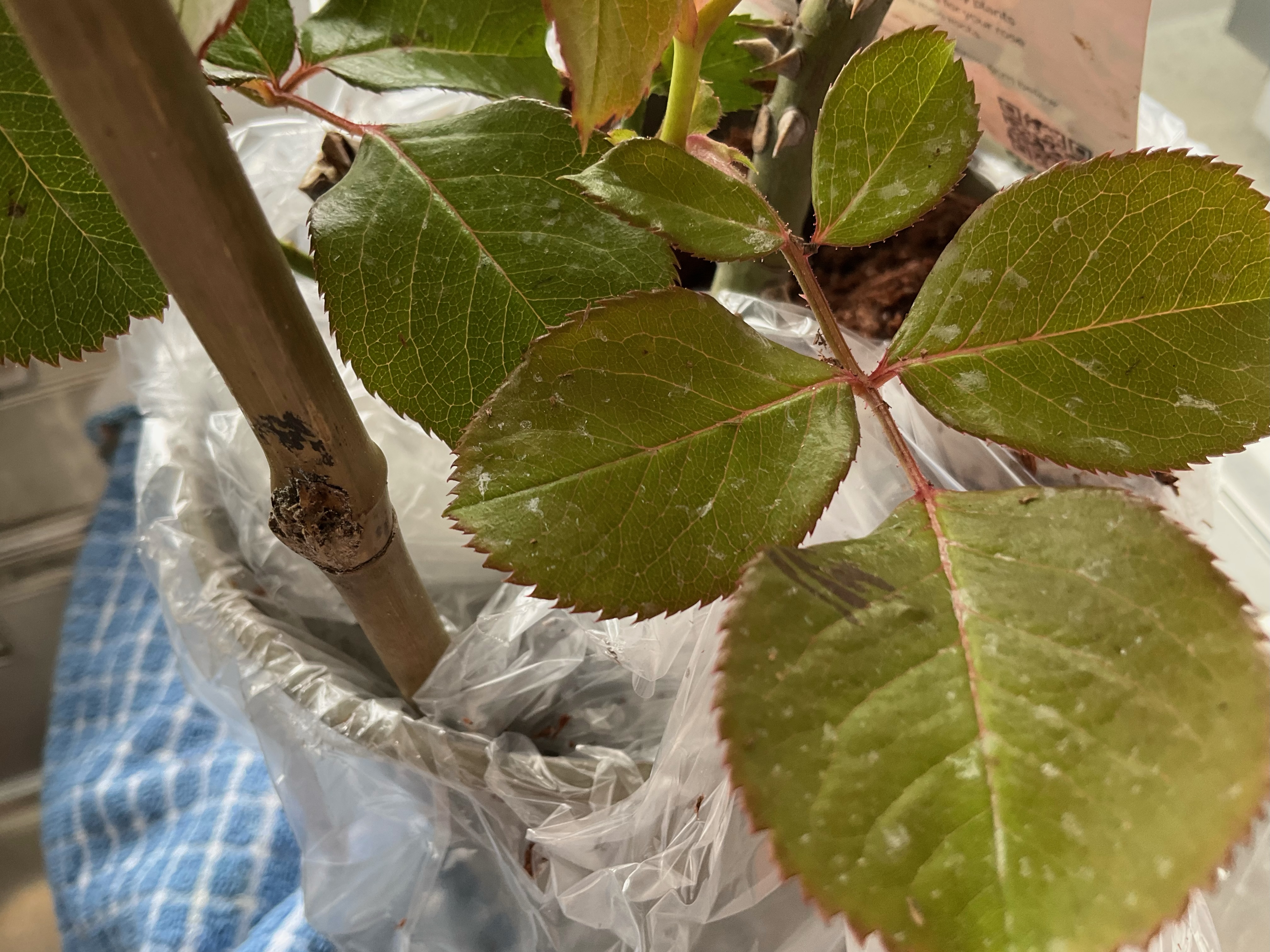Roses are hardy plants, but like all living things, they can occasionally fall victim to pests and diseases. Knowing what to look for — and how to treat it — will help keep your roses strong, healthy, and blooming beautifully.
Common Rose Diseases
1. Black Spot
Black Spot is one of the most common rose diseases. It appears as black, round spots with fringed edges on leaves, which then turn yellow and drop off.

Treatment:
- Remove and dispose of affected leaves (do not compost them).
- Apply a fungicide formulated for roses regularly during the growing season.
- Water at the base of the plant to keep leaves dry.
2. Powdery Mildew
This appears as a white, powdery coating on leaves, stems, and buds, often caused by warm days and cool nights.

Treatment:
- Improve air circulation by pruning and spacing plants appropriately.
- Avoid overhead watering.
- Use a fungicide if necessary.
3. Rust
Rust shows as orange or rust-coloured pustules on the leaves. In severe cases, leaves may drop prematurely.

Treatment:
- Remove affected leaves immediately.
- Clean up fallen leaves at the base of the plant.
- Apply a fungicide designed for rust.
Preventing Disease
- Plant in a sunny spot with good air circulation.
- Water at the base, not over the foliage.
- Feed regularly with a balanced rose fertiliser.
- Prune annually to remove dead or crowded growth.
- Clean tools between uses to avoid spreading infections.
Healthy roses are more resistant to disease, so consistent care and early intervention are key. If you’re unsure what’s affecting your rose, feel free to contact our team for advice — we’re always happy to help!
Was this article helpful?
That’s Great!
Thank you for your feedback
Sorry! We couldn't be helpful
Thank you for your feedback
Feedback sent
We appreciate your effort and will try to fix the article
